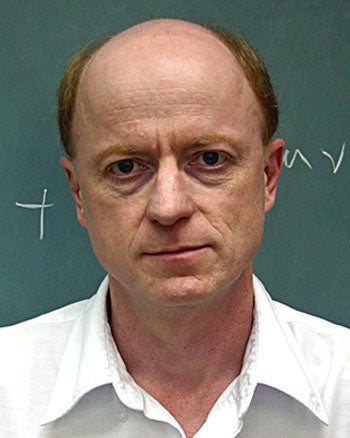Physicists picture light and other electromagnetic radiation as arising from underlying symmetries in subatomic particles and force fields. But Robert Bluhm of Colby College in Maine and Alan Kostelecky of Indiana University say quantum-scale violations of relativity may also create light.
Special relativity holds that the speed of light is the same in every direction. This aspect of the theory, called Lorentz symmetry, says the laws of physics stay the same no matter how a physical system — a spaceship or a molecule — changes its speed or orientation. Current experiments verify the reality of Lorentz symmetry to within a few parts in 10 million billion.
“Although Einstein’s theory has lasted 100 years, many physicists believe it will someday be superceded by a more fundamental theory, because general relativity is not compatible with quantum physics,” Bluhm tells Astronomy. “Looking for Lorentz violation is one way of searching for hints of a more fundamental theory.”
Finding evidence that the speed of light varies slightly in different directions — proof of broken Lorentz symmetry — would radically revise scientists’ notions of the universe. It would mean that space (or more properly, relativity’s four-dimensional space-time) has a kind of texture — a preferred orientation.
“Our paper primarily examines technical issues related to what happens when Lorentz symmetry is broken,” Bluhm notes. “The fact that light can emerge purely as a result of Lorentz breaking came somewhat as a surprise to me.”
Kostelecky offers a view of space in which aligned arrows exist everywhere. The arrows are force vectors representing space-time’s preferred direction. At the very smallest scales, particles would exhibit slightly different behavior depending on their orientation with respect to these vectors. Kostelecky imagines light as a shimmering of this vector field analogous to wind blowing through a field of grain.
The results, published March 22 in the journal Physical Review D, show this new description of light is a general feature of relativity violations: It holds true in empty space as well as in the presence of gravity, something conventional theories of light often ignore.
“This is an alternative, viable way of understanding light, with potential experimental implications. That’s what makes it exciting,” Kostelecky says. Possible detectable effects include asymmetries between properties of certain particles and antiparticles, and cyclic variations in their behavior as Earth rotates, but any deviations from behavior predicted by conventional ideas will be tiny.
Ronald Walsworth, an experimental physicist at the Harvard-Smithsonian Center for Astrophysics in Cambridge, Massachusetts, says the tests Kostelecky has suggested are valuable and worth pursuing. No matter the final result, such experiments promise to deepen physicists’ understanding.
Improved experimental tests that fail to find broken Lorentz symmetry would also be important, Walsworth says, because they would put tighter restrictions on theories attempting to explain dark energy, as well as those trying to reconcile the predictions of quantum mechanics and relativity.










